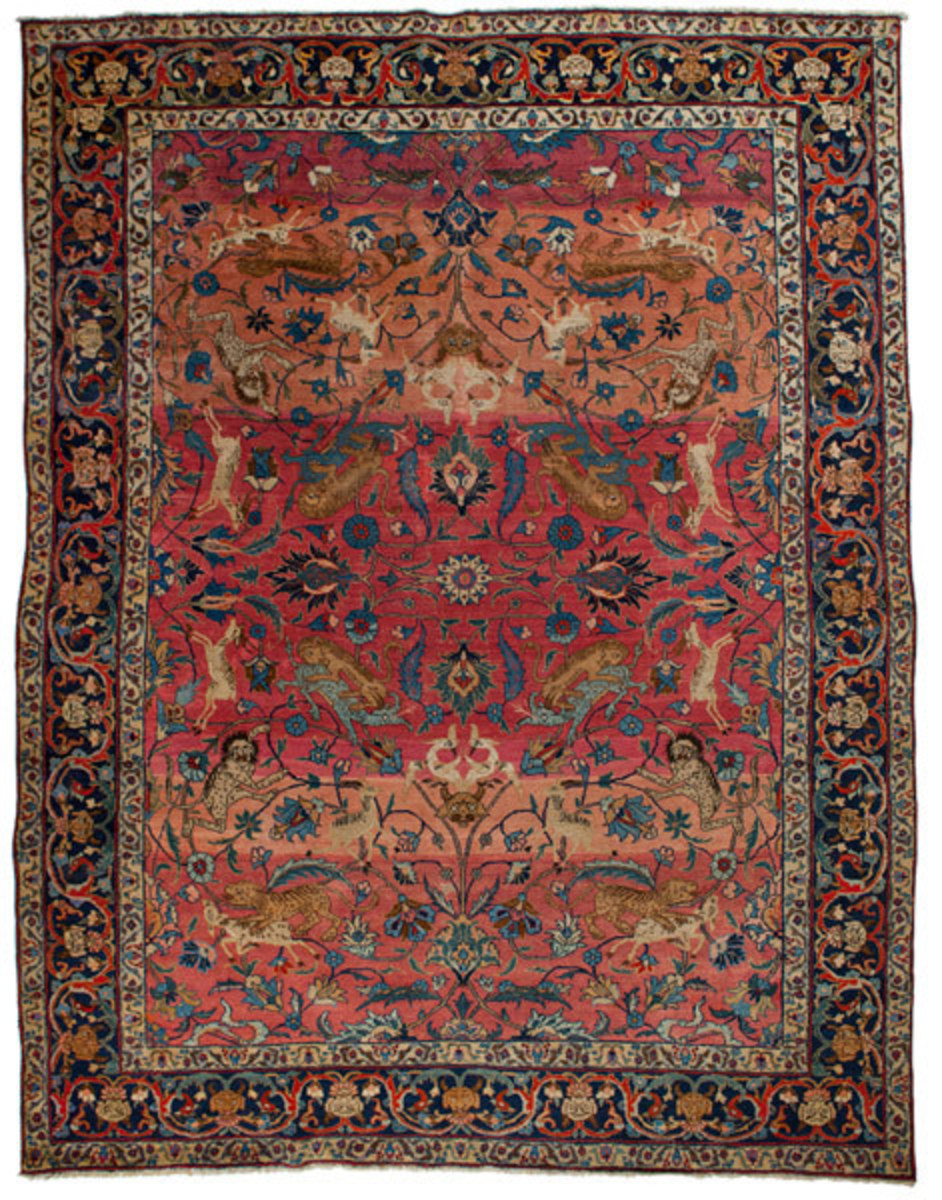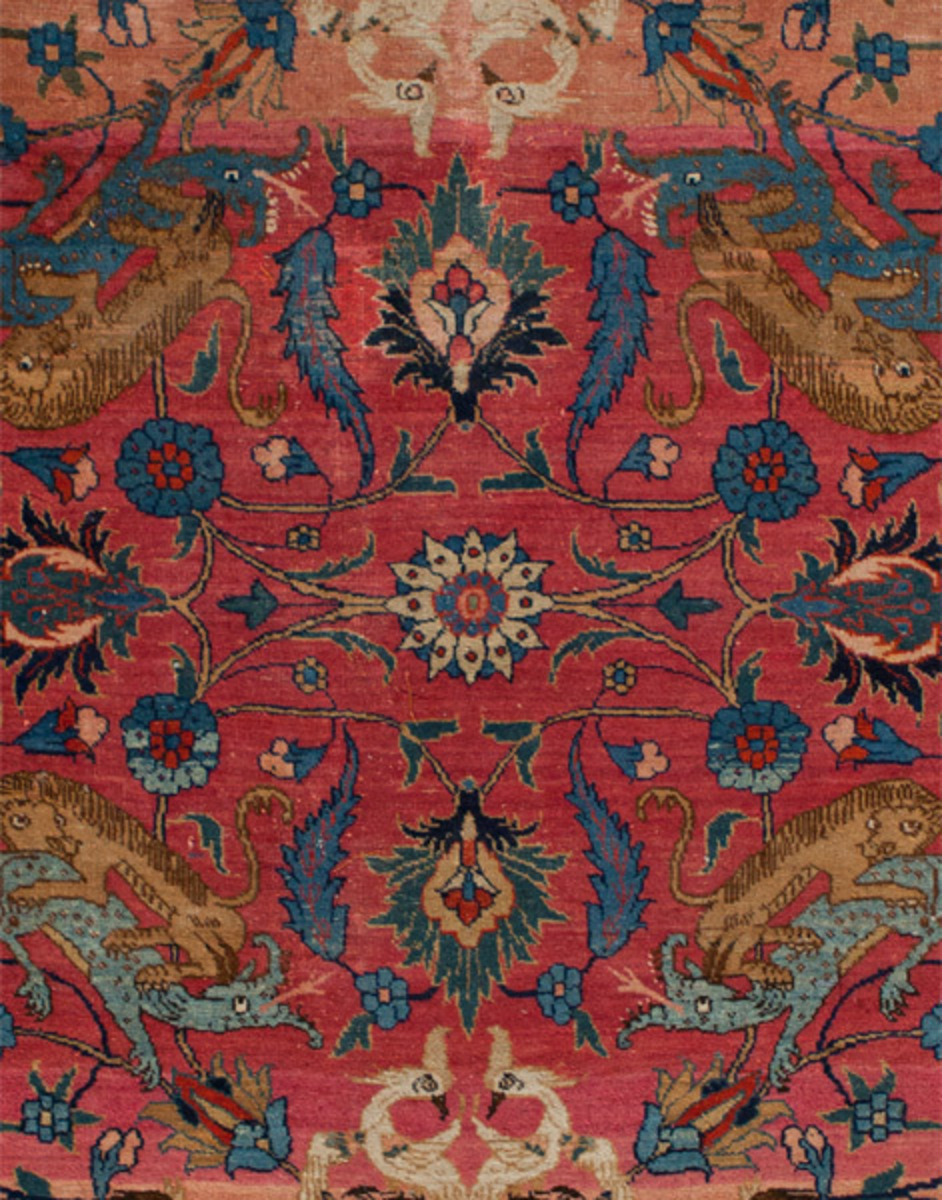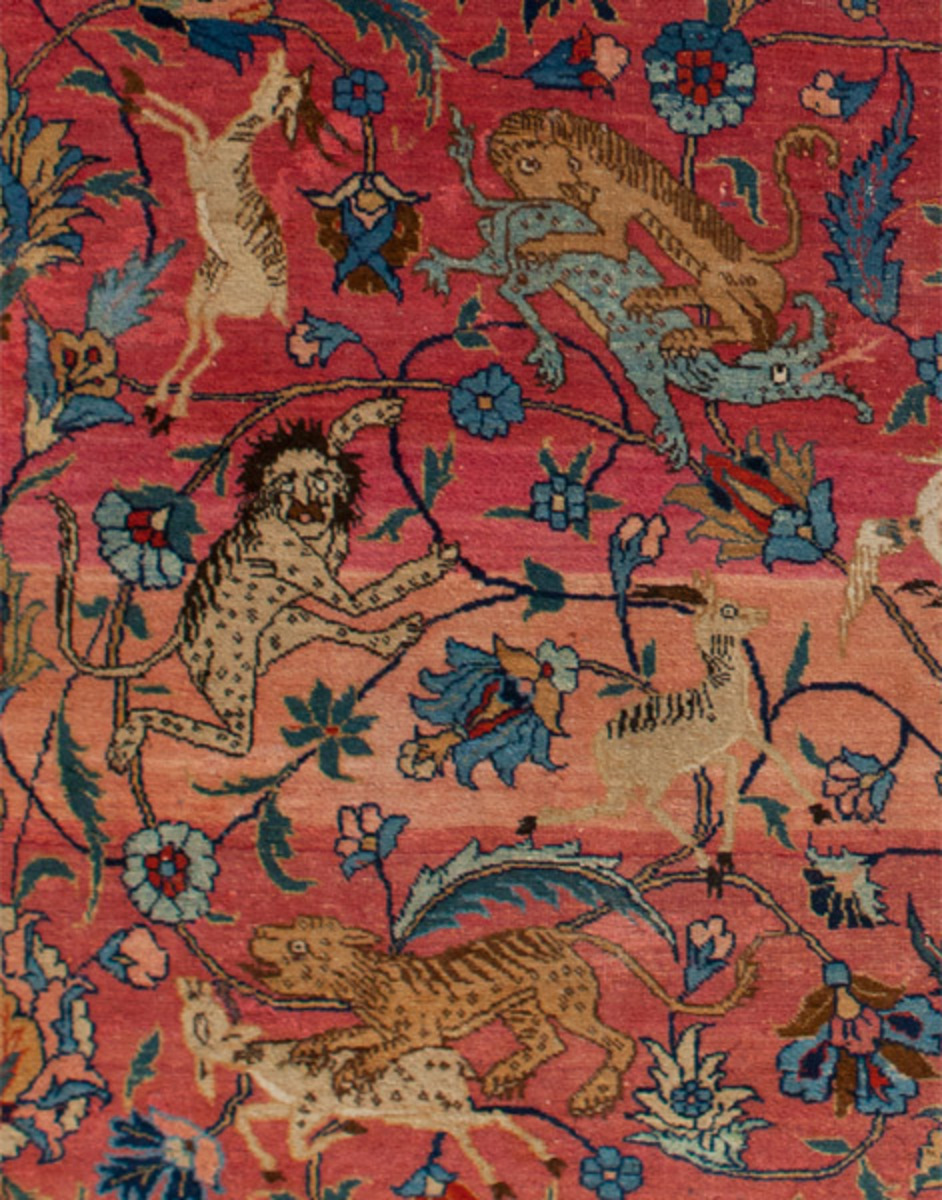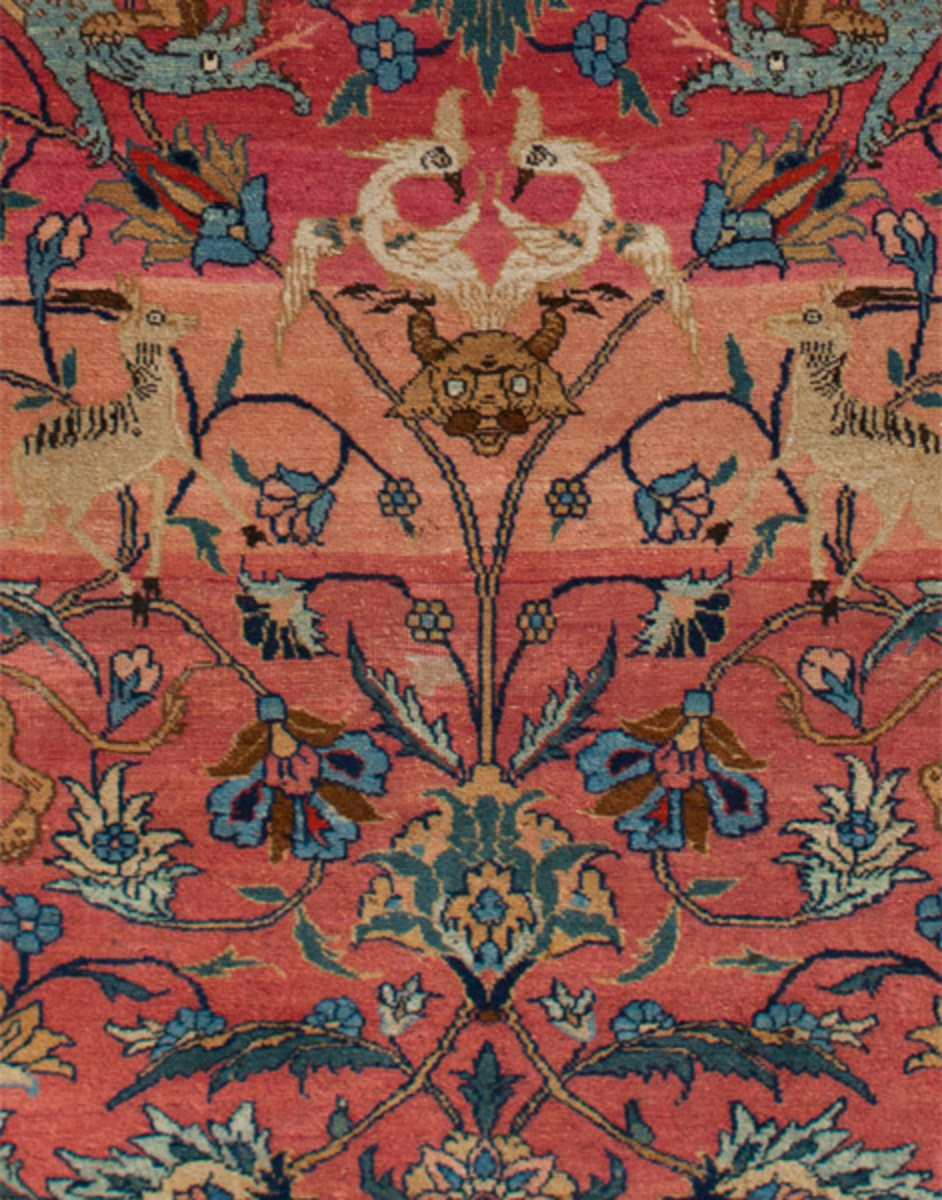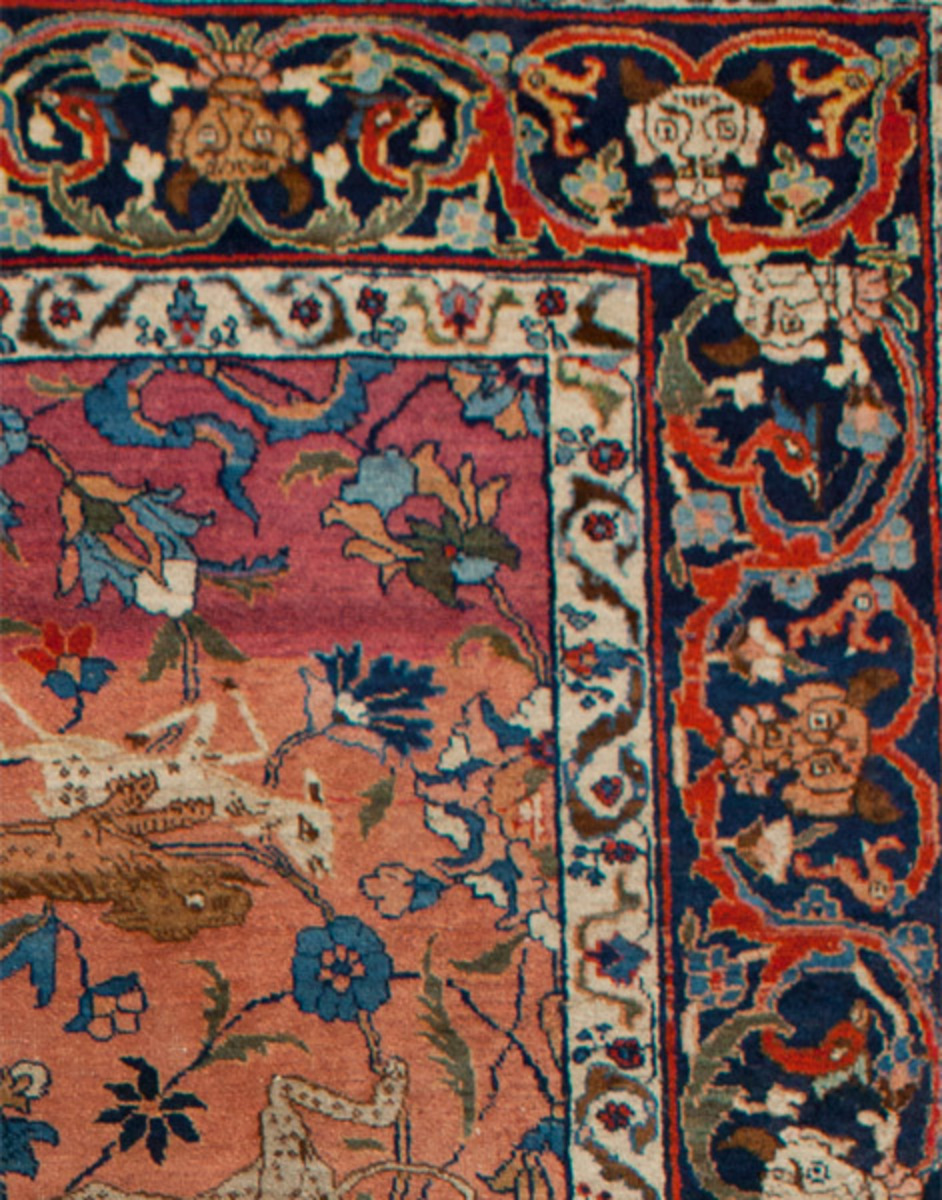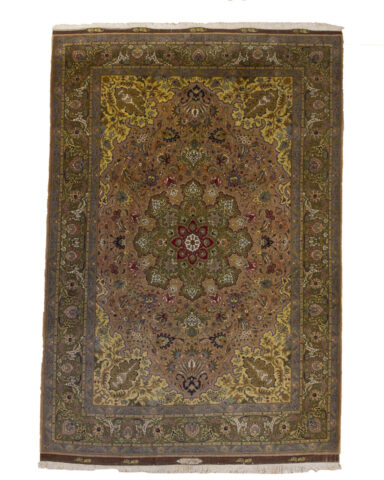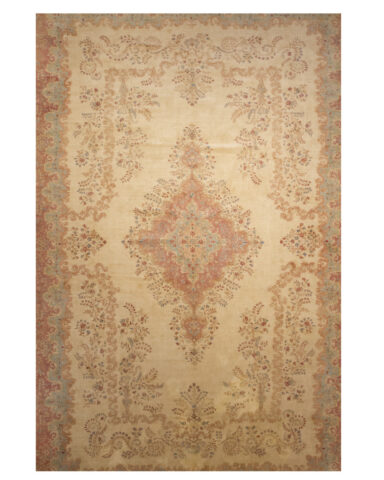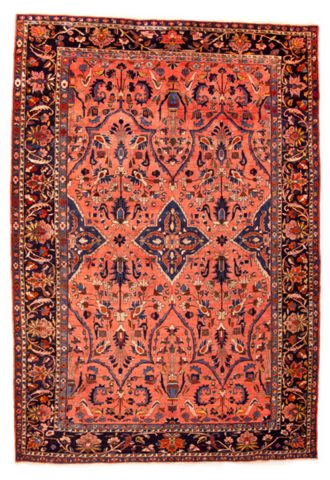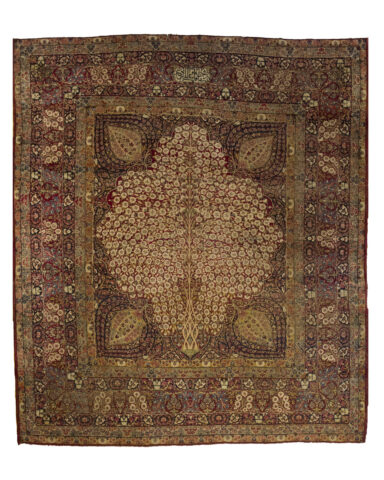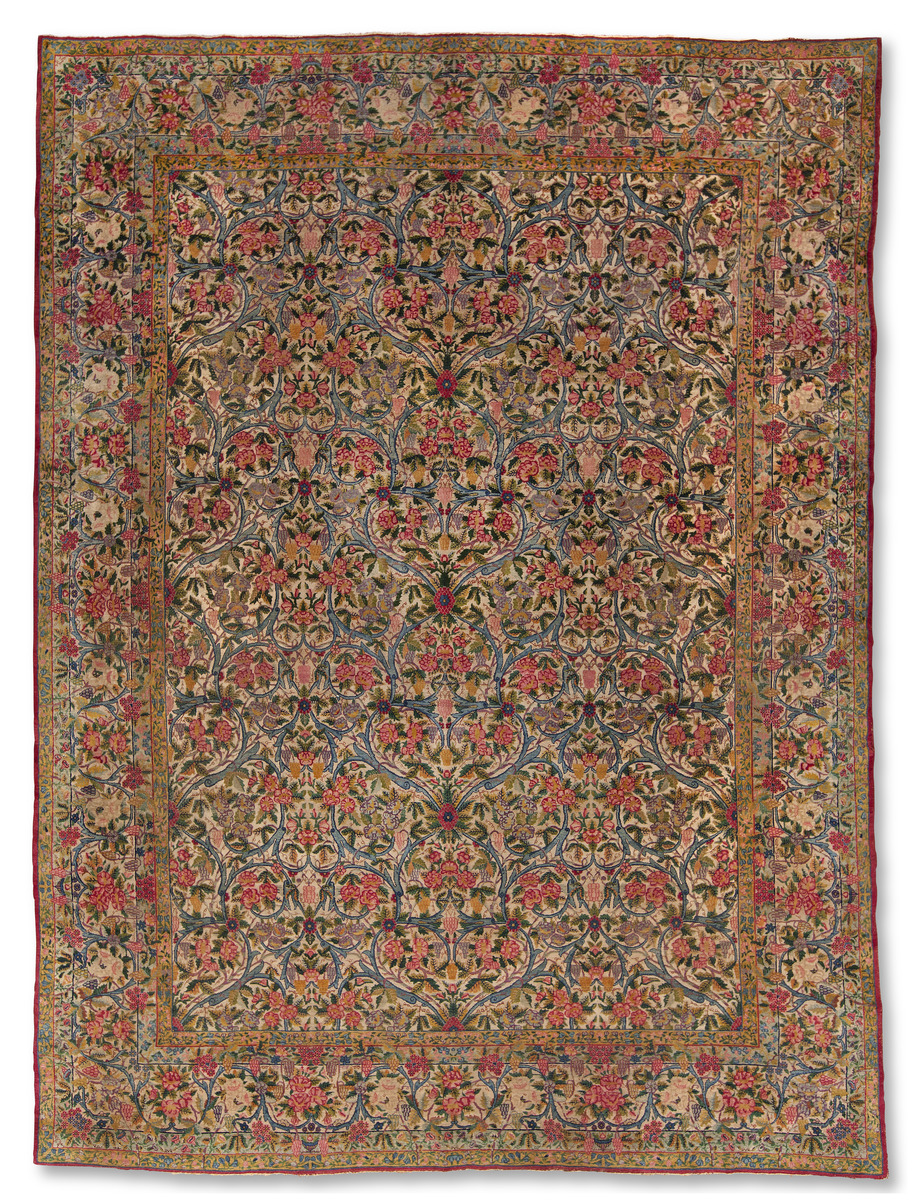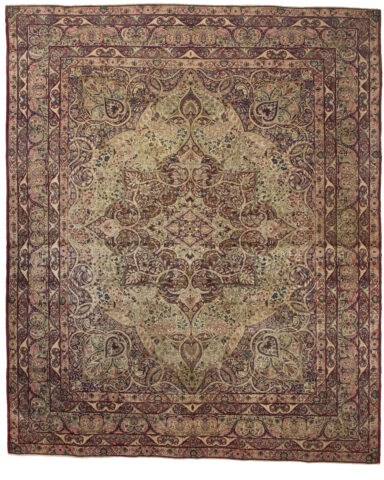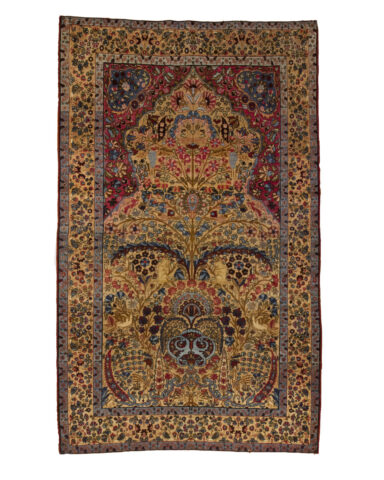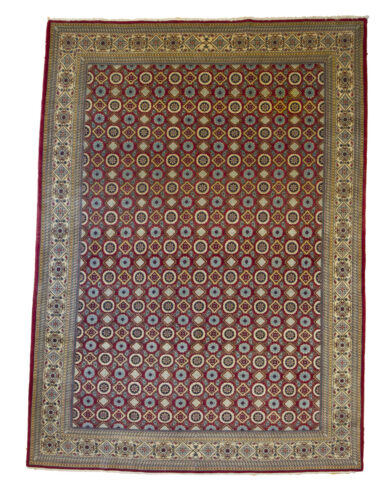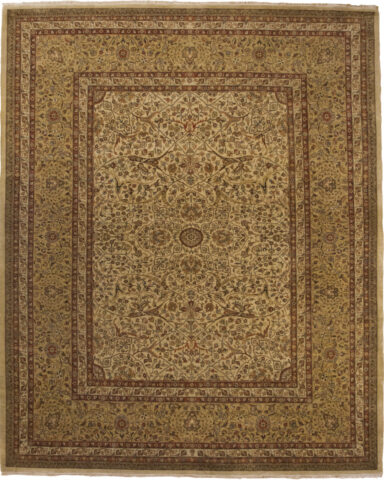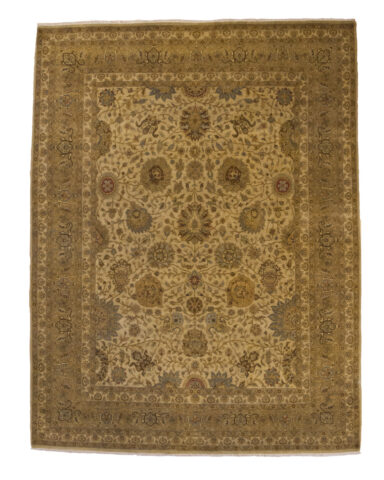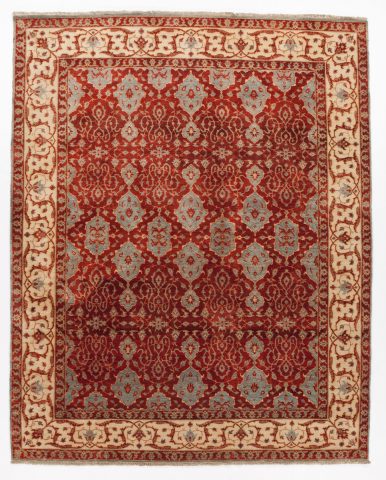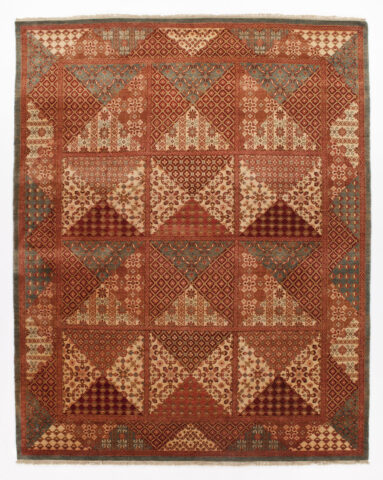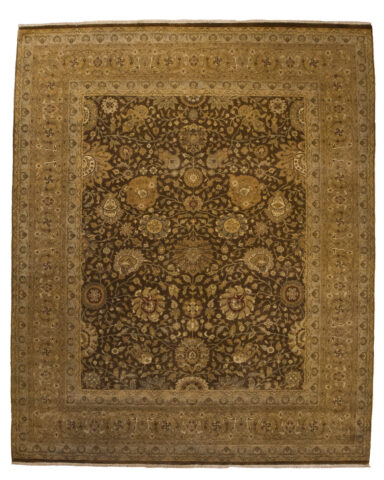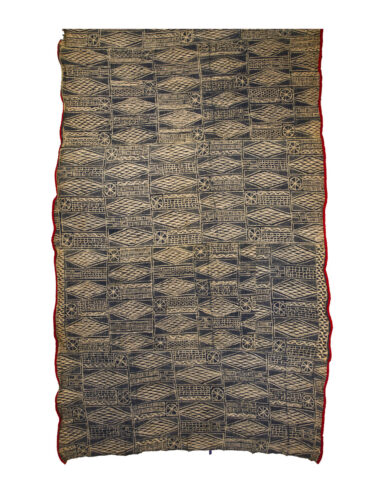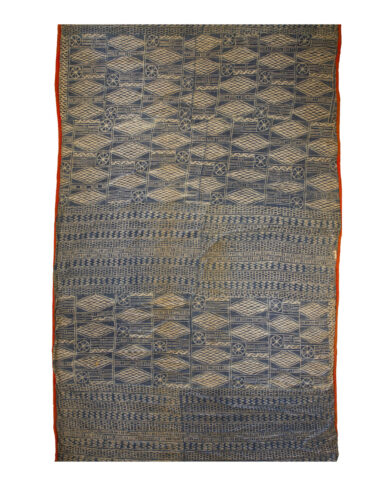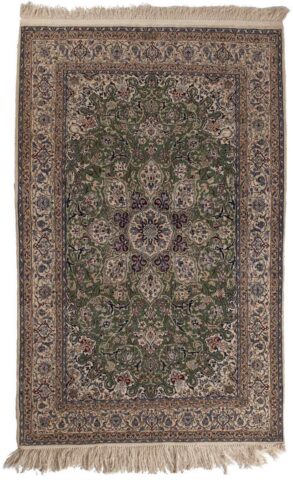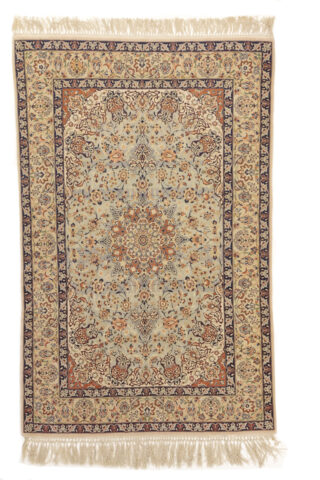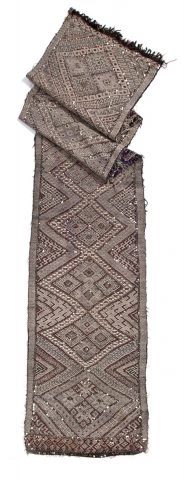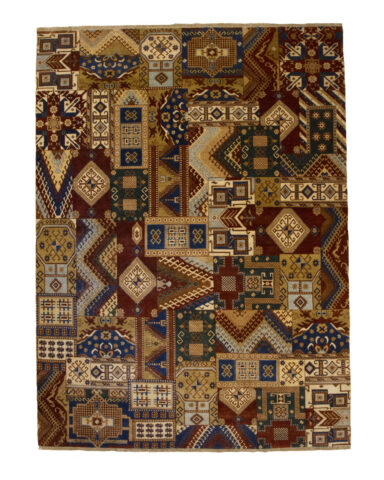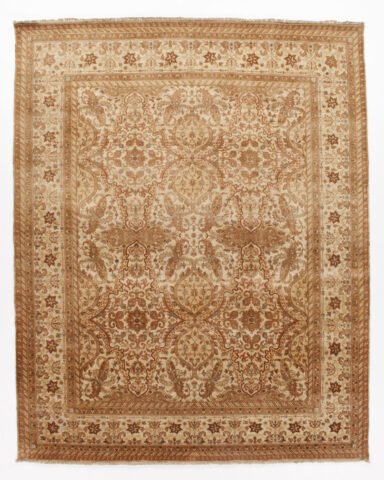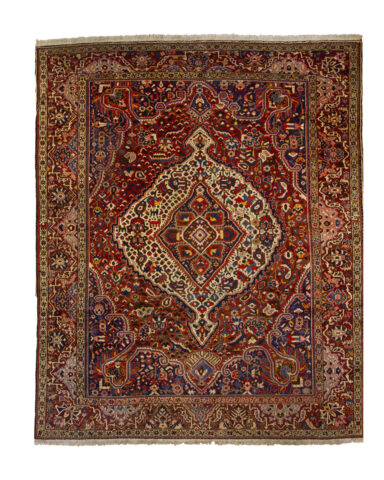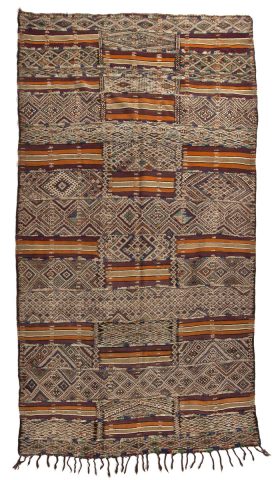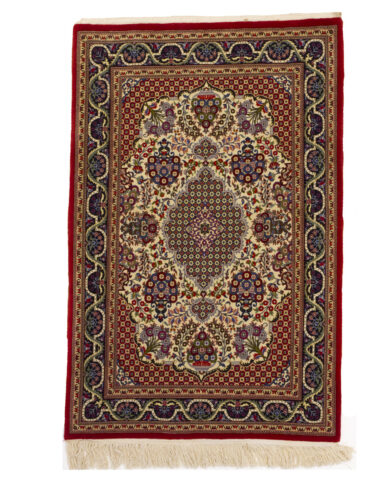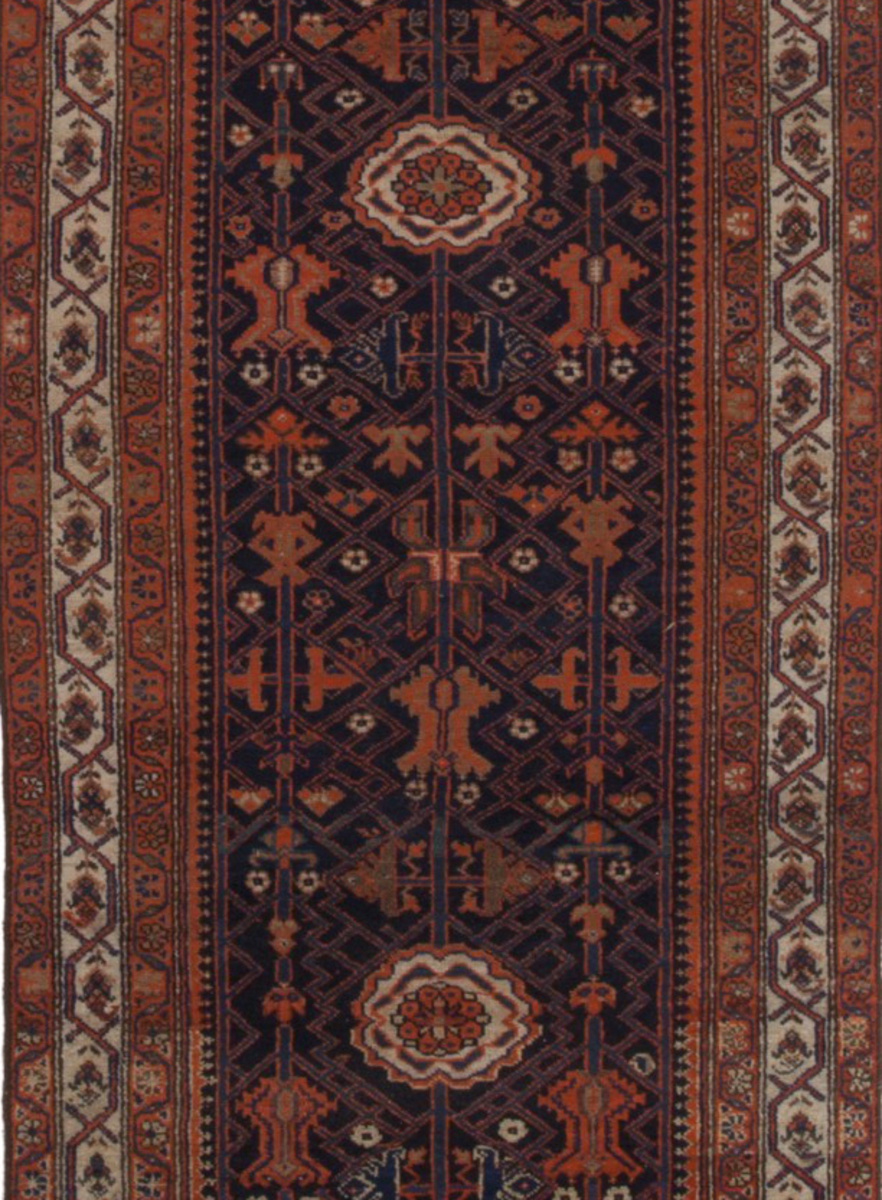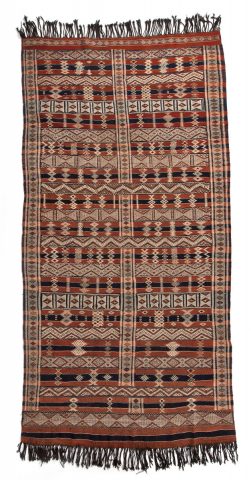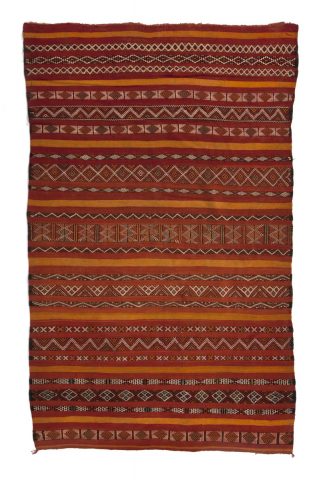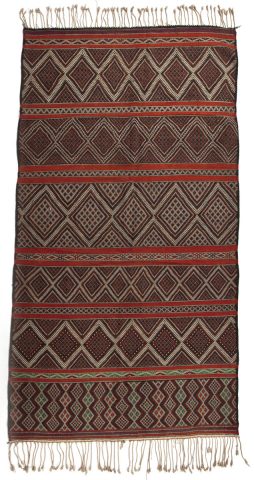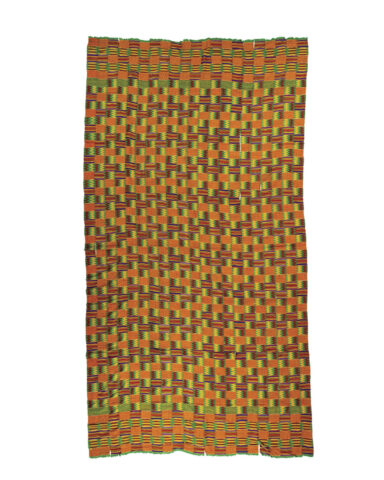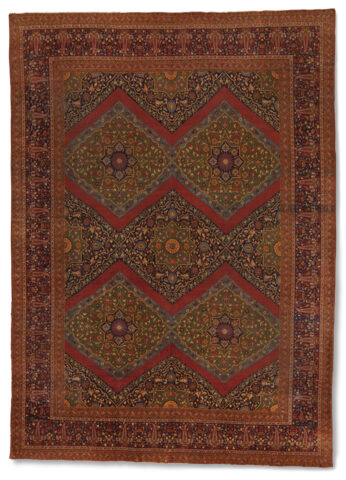Description
This unusual carpet, featuring a hunting scene in the field and a repeated skull motif border in a floral arrangement, is a captivating and thought-provoking piece that reflects the rich cultural history and symbolism of its origins. The field’s design is reminiscent of the Viana carpet, while the border is highly distinctive and uncommon.
The theme of “The Hunt” is historically associated with high royalty and nobility, who would commission carpets with hunting scenes to showcase their power, wealth, and authority. Such carpets were often reserved for exclusive use in royal courts or palaces. The intricate integration of animal and floral patterns in this carpet is so skillfully executed that the design appears to be illustrated rather than woven.
Despite the abundance of flora and fauna motifs, the carpet maintains a sense of visual symmetry, contributing to its overall aesthetic appeal. The animals depicted in the field include warring lions, tigers, rams, dragons, and deer – each with its unique symbolism and cultural significance.
Lions and tigers are often viewed as symbols of power, strength, and courage. In Persian culture, they represent the authority and dominance of the king. The presence of these majestic creatures in the hunting scene signifies the might and prowess of the ruler who commissioned the carpet.
Rams symbolize determination, leadership, and protection. In Persian mythology, the ram is associated with the guardian spirit of the flock, and its inclusion in the hunting scene could be interpreted as a protective force against the chaos of the natural world.
Dragons, as mythical creatures, embody supernatural power and wisdom. Their presence in the carpet’s field suggests a link between the spiritual and earthly realms, connecting the ruler to divine forces and emphasizing their authority.
Deer are often associated with grace, beauty, and gentleness. In the hunting scene, they represent the harmony and balance of nature, as well as the vulnerability of life in the face of struggle and conflict.
The carpet’s border, with its repeated skull motif, is both unusual and striking. The skulls, placed in a floral arrangement, could symbolize the cycle of life and death and the transient nature of earthly power. The juxtaposition of these morbid elements with the beauty and vitality of the floral patterns serves as a reminder of the impermanence of life and the inevitability of death, even for the most powerful rulers.
Given that the carpet is a village weave and approximately 200 years old, it also serves as a testament to the skills and creativity of the weavers. The composition’s rich symbolism and intricate details highlight the cultural significance and artistic mastery of the time.


